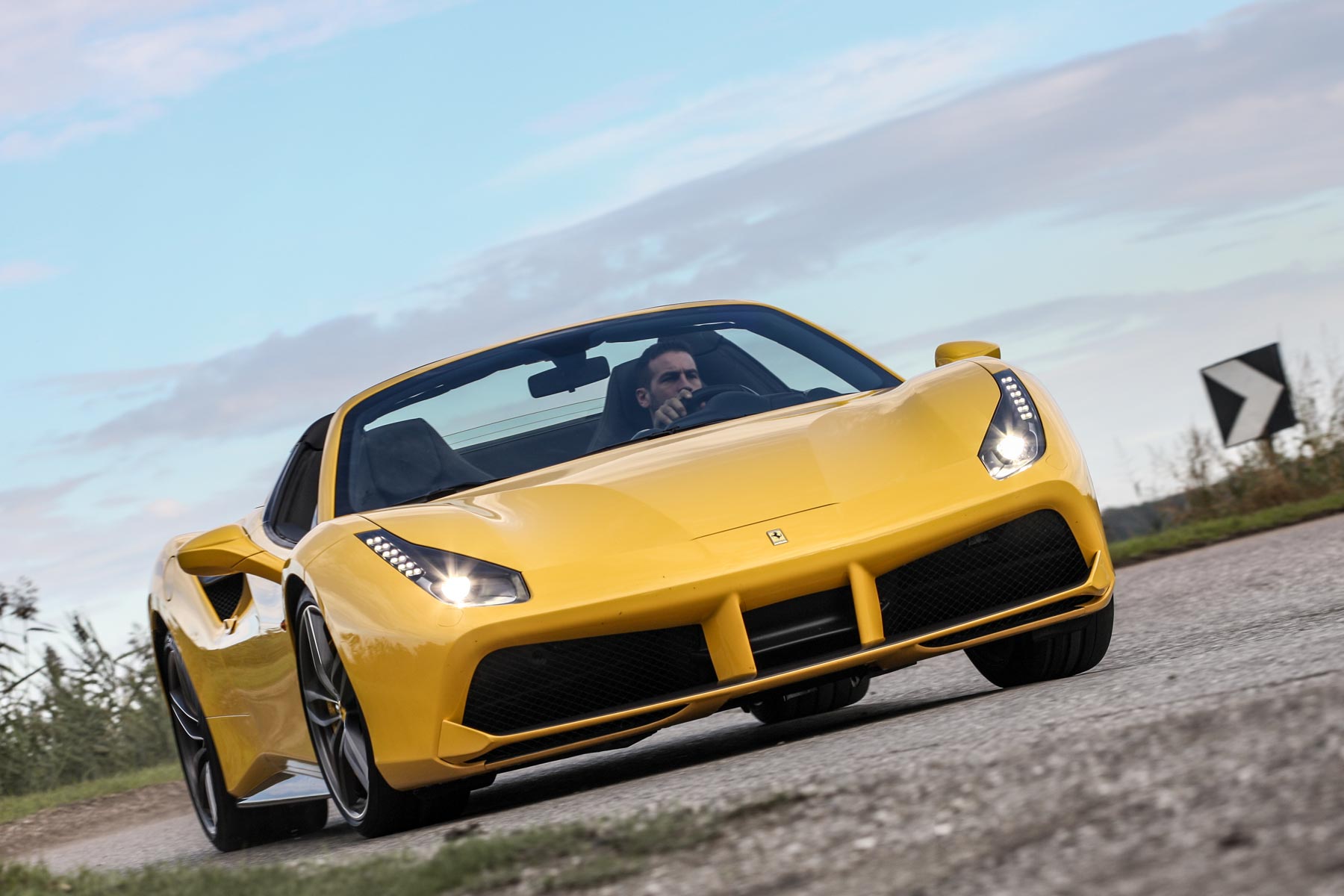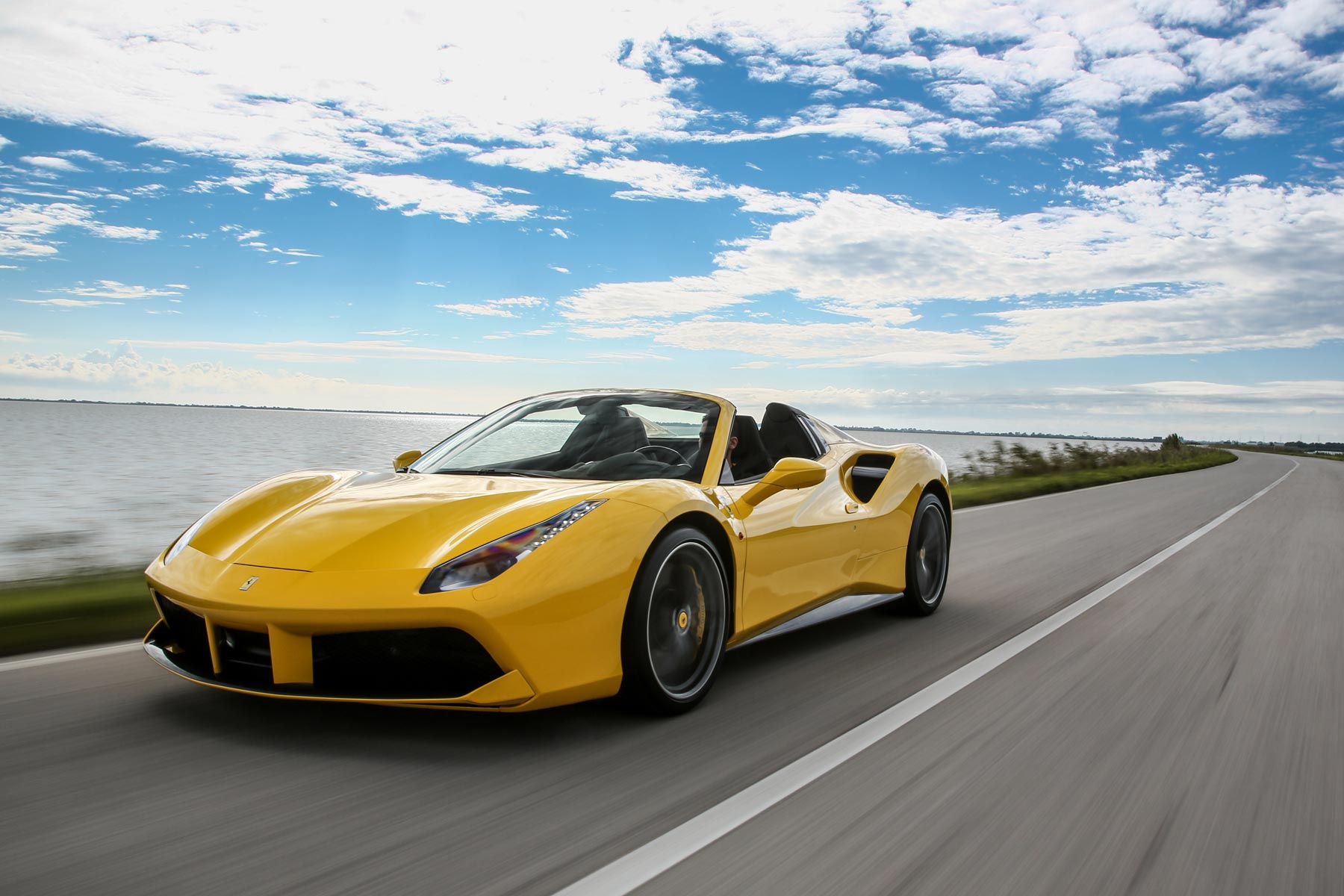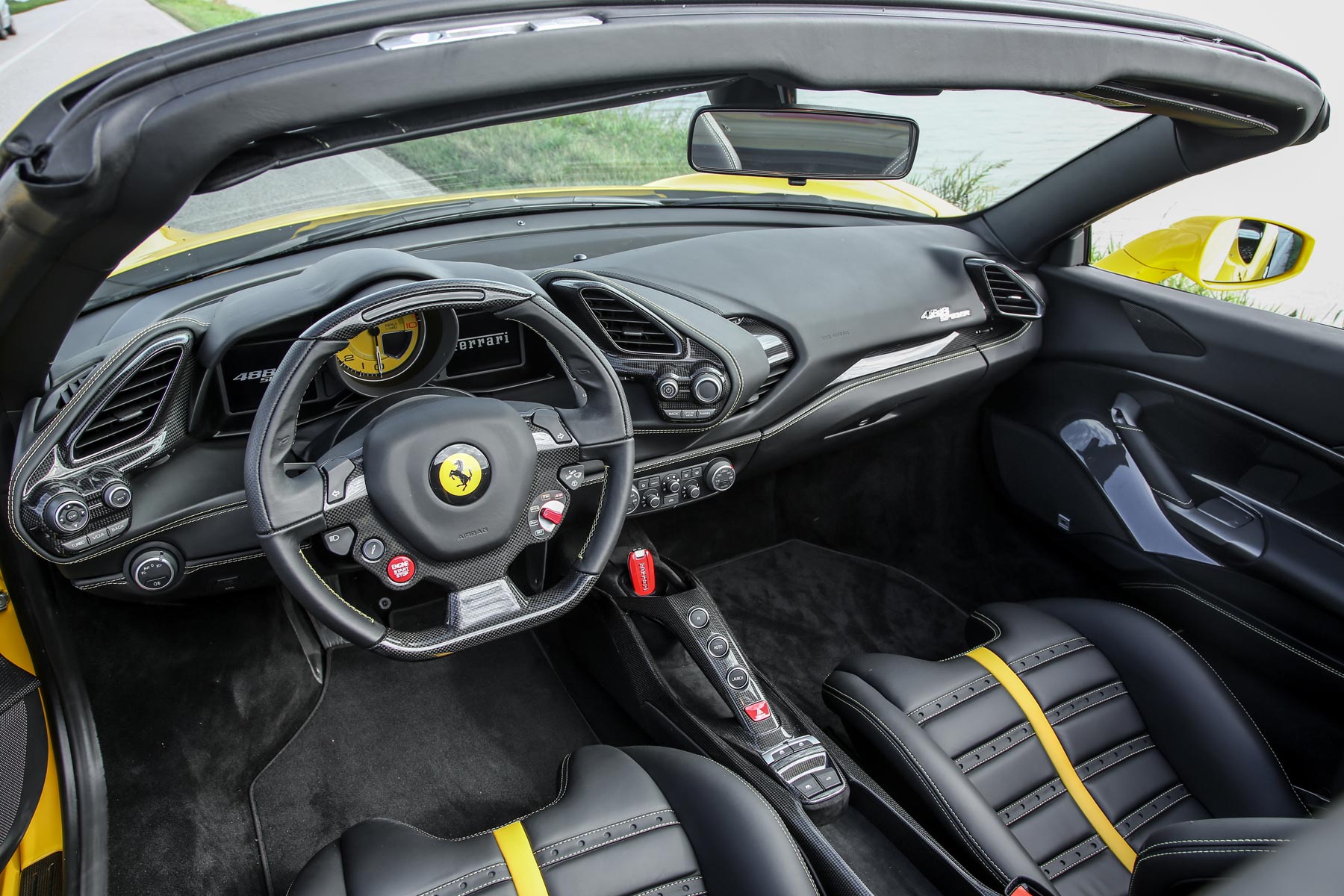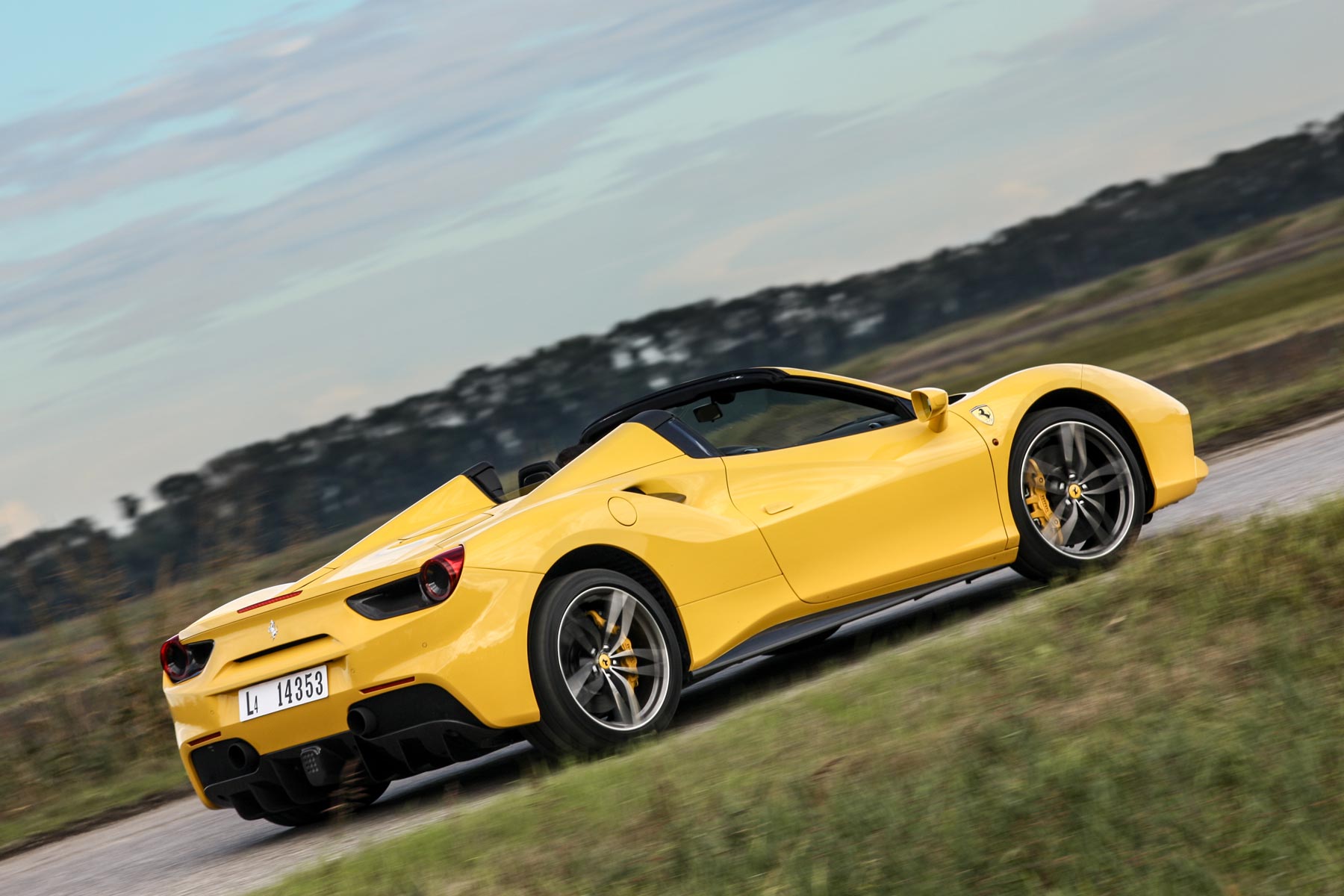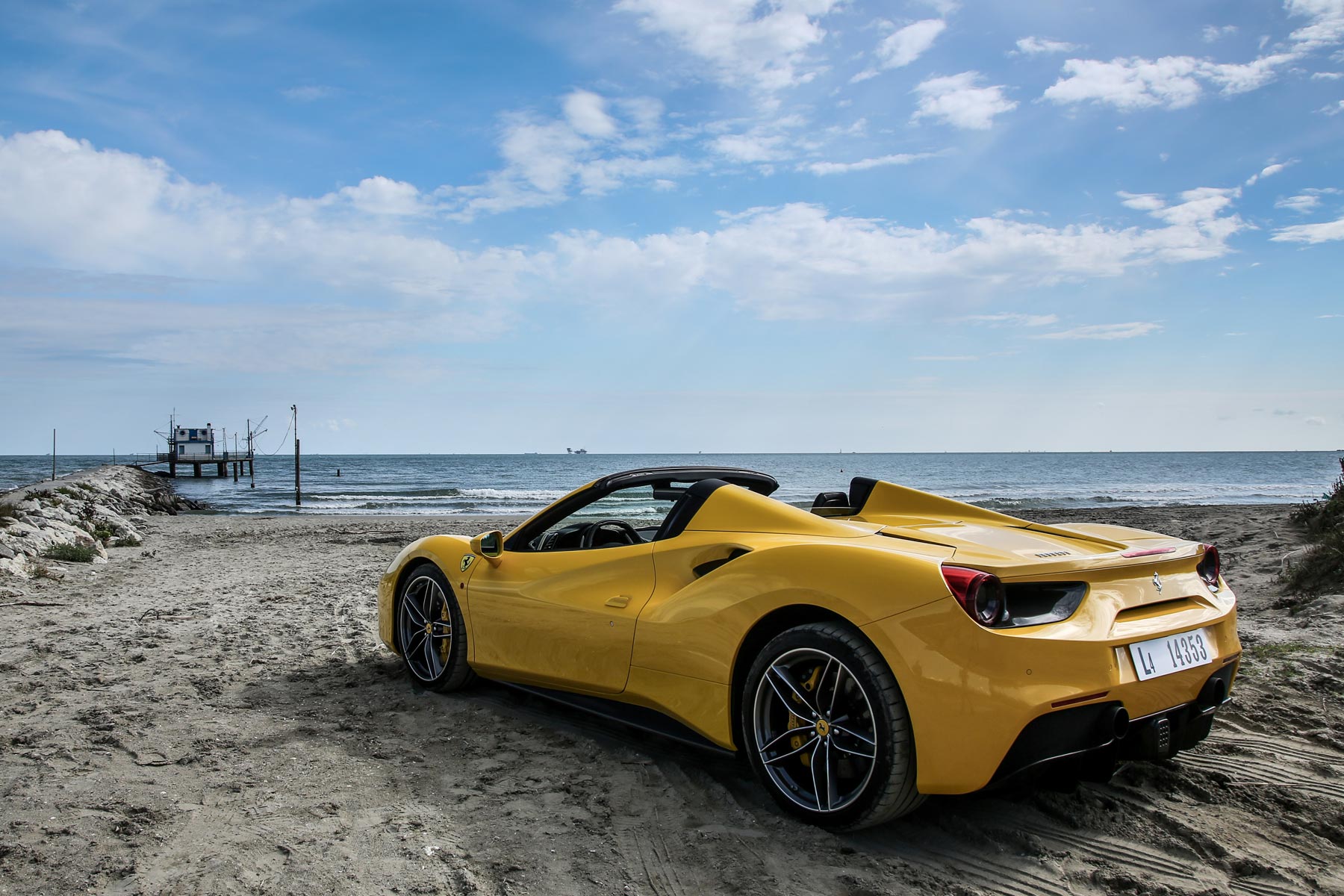If you’ve ever been lucky enough to drive the Ferrari 458 in anger, you’ll know what an unremittingly fine car it was. Fast beyond your dreams, it combined the aural signature of a Ferrari F1 car with engineering integrity that was unsurpassed.
Now it is being replaced by the 2016 Ferrari 488. You might, like me, think a replacement was unnecessary. But Ferrari never rests on its laurels and its six-year product cycle means a new model is called for.
While the 488 owes a little to its predecessor – the windscreen and folding roof mechanism in the Spider are unchanged – there are many major changes, including a stronger, stiffer chassis and a new power unit.
It’s that engine which will raise eyebrows. It has shrunk 600cc to 3.9 litres, but turbochargers lift the power by 100hp to 670hp, while giving small gains in CO2 emissions and economy, too. The issue is that turbos always have a dramatic impact on exhaust noise, critical for any Ferrari. But, as Ferrari made great pains to point out, it has that point more than covered.
The 488 is also the first production Ferrari, apart from the LaFerrari, to be designed entirely in-house. That means long-term collaborator Pininfarina was not involved, something I reckon I spotted before I asked the question. To my mind, the 488 does not have the elegance of the 458. But maybe that’s what Ferrari wanted.
2016 Ferrari 488 Spider: On the road
Two-hundred-plus mph and 0-62mph in three seconds dead. What more do you need to know? Well, the numbers only tell half the story. It’s not simply the extra power of the 488 engine. The torque that comes from turbocharging means vastly more pulling power right across the rev-range.
While the new rev limit is 8,000rpm, 1,000rpm down on the 458, the performance is a whole lot more accessible at sub-stratospheric engine speeds. As an example, with the manettino set in ‘race’ mode (entirely appropriate for road use if you know what you are doing) the rear tyres will shimmy and the back end step out at quite modest road speeds and throttle openings. The extra torque simply lets those tyres rip.
There is, naturally, a bank of electronics to keep the Ferrari 488 on the Tarmac, the stability system rapidly braking individual wheels to keep things pointing in the right direction. This time around, the systems are even more sophisticated – as they arguably need to be.
It’s very hard – some would say impossible – to build a turbocharged engine that has the throttle response of a naturally aspirated equivalent. And to make matters worse, Ferrari had set the bar very high with the previous 458 Spider. Yet the engineers reckon they have cracked the lag-free goal and there was only one condition where it wasn’t quite there. Driving fast into an uphill hairpin, on the beautiful roads around San Marino, and the switch from trailing throttle to full power brings on a momentary hesitation.
The reverse of this then happens as you carry on accelerating. Such is the sheer ferocity of the gain in speed, the warp speed at which everything happens, that the engine is bouncing off the rev limiter before you’ve had time to grab the next gear.
Sticking the paddle-shift transmission into auto lets the driver get on with the steering, accelerating and braking. Needless to say, the 488 handles these three aspects with alacrity, helped by some incredible work on the aerodynamics. As always, Ferrari avoids the deployable rear spoilers that others use.
2016 Ferrari 488 Spider: On the inside
The joy of the Spider’s retractable hard-top is its simplicity. The two sections flip backwards into the area above the engine in just 14 seconds, at speeds of up to 25mph. The rear window powers down so there’s a proper fresh-air feel, and more of the deep bass from the engine. The noise is pretty dominant. There’s no ‘quiet’ button, though driving in the gentler manettino settings can be relatively relaxed.
The optional sports seats are incredibly grippy, but firm and unforgiving. Passengers may well ask why comfort has to suffer so much, although keen drivers will love them.
And it’s a nice interior, full of pleasing detail married to technical sophistication. There’s plenty of room, stowage space is reasonable there’s a decent trunk and additional space behind the seats for luggage. Apple Carplay is integrated into the infotainment system.
2016 Ferrari 488 Spider: Running costs
The UK list price is £204,400 and you’ll surely want to add to that from the extensive options list. So it’s expensive, certainly, yet the Ferrari offering is not without merit. Incredibly, new Ferraris now come with a seven-year routine maintenance package included in the price. Yes, that’s no extra for the annual service, apart from wear and tear items. The warranty in the UK is also four years, rather than the three years offered elsewhere.
Residual values are invariably strong for Ferraris, especially as many of its dedicated sports cars, like this 488, will cover low mileages.
Most car manufacturers move to lower capacity turbo engines to maximise CO2 and mpg statistics, but Ferrari, naturally, focuses more on pumping up the horsepower. So the CO2 is down only a touch to 260g/100km, and the combined fuel economy figure is now 24.7mpg.
2016 Ferrari 488 Spider: Verdict
This is such an emotional sports car. No matter how you skin it, how many rivals you put up against the 488 Spider, none them are Ferraris. That counts.
But there’s much more to it than this, for here you getting the very finest engineering money can buy. That’s a bold assertion, but it’s hard not conclude with the awe-inspiring attention to detail.
And then the 488 Spider is an utterly thrilling car to drive, stupendously fast in the right circumstances, but equally rewarding when the limits are more constrained. Personally I’d like the styling to be less brutal, and I prefer the sound of the old naturally aspirated 458. The majority, however, are likely just to lap it all up with a great smile on their face.
2016 Ferrari 488 Spider: Specifications
Engine: 3.9-litre turbocharged V8
Price: £204,400
Power: 670hp
Torque: 561lb ft (760Nm)
0-62mph: 3.0 seconds
Top speed: 203mph (300km/h)
Fuel economy: 24.7mpg (11.4l/100km)
CO2 emissions: 260g/km
